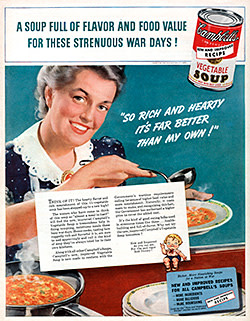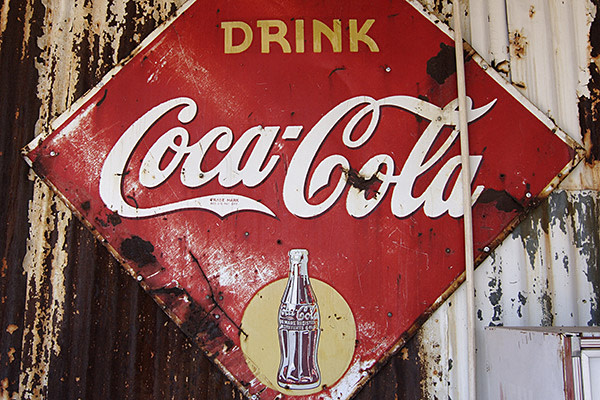Bloated US food and beverage sector needs a new bliss

Simply sign up to the US & Canadian companies myFT Digest -- delivered directly to your inbox.
In his book Salt, Sugar, Fat, Michael Moss recounts a food industry meeting in 1999. A room full of chief executives listened to a speech on how their companies were being blamed for their contribution to rapidly rising rates of obesity in the US and what they could do to alleviate the problem.
Fast forward a decade and a half from that meeting, at which the executives apparently chose to ignore the speaker’s recommendations, and the industry is experiencing tremendous disruption in the face of consumers who are increasingly shunning processed foods and carbonated drinks in favour of healthier fare.
This upheaval has forced many food and beverage companies, from Kraft and Heinz through to General Mills, Campbell Soup, Kellogg’s, Coca-Cola and McDonald’s, to reassess their place in corporate America. This quest sometimes comes with a shove from private equity firms or activist investors, eyeing such companies’ vulnerability and ripeness for reducing excess costs.
Nearly three years ago, 3G Capital, the Brazilian cost-cutting king, took over Heinz, which was established in 1876. Earlier this year Heinz merged with Kraft to create Kraft Heinz. Activist investors have been circling the industry, pushing, and often achieving, intense efficiency targets. The message is clear: find new relevance or say goodbye to your independence.
This is where longevity comes in. US companies may not be as old as some European or Japanese companies, but this does not mean they do not deserve the badge of longevity.
Some have been around since the early 1800s. They have endured tremendous tumult: the civil war, the Great Depression, two world wars and numerous developments in technology and consumer behaviour, globalisation, oil shocks and the recent global financial crisis. The very fact that they still exist means there is a tremendous amount to learn from them.

Campbell Soup’s roots go back to 1869, the same decade as the abolition of slavery in the US. Coca-Cola was invented in 1886. McDonald’s, though established at the much later date of 1955, is still considered a company with history. That is particularly true when considering that the “characteristic” age of a company listed on a US stock exchange is just eight years, according to research by Credit Suisse, the bank.
But as Jim Collins, author of best-selling books such as Good to Great and Built to Last, says, you cannot really have longevity without greatness. “It is about enduring at a high level. Just hanging on isn’t any good,” Collins says.
He argues that it is not enough for a company to have a long life because it is winning financially. It needs to be missed if it were to disappear, and the company’s raison d’être should not vanish when the founder leaves. To achieve this it has to be able to continue innovating by constantly challenging itself and setting intimidatingly lofty goals to withstand the sands of time and not drown in them.
Mars
Founded 1911
Food and confectionery

Mars has managed what many family-owned companies have not: it has reached the fourth generation. Victoria Mars, the current chairman, is the great-granddaughter of Frank Mars who, with his son Forrest, invented the Milky Way — the chocolate bar, that is. Succession planning is a serious matter at Mars, starting 15 years in advance. Every member of the family, with or without direct business involvement, is engaged in the process. Victoria Mars said in a recent interview: “[It is about] getting the whole family to understand what this legacy is that we have and what is the responsibility that comes with that. [In general] it is not the business that is going to be the problem, it is the family that causes those problems.”
Financial success and innovation are inextricably linked. Without innovation it is difficult to keep the consumer on board and, as a result, profits will be elusive. Apple is a classic example. The late Steve Jobs took Apple from near bankruptcy to being the most valuable company in the S&P 500, thanks to inventions such as the MacBook and the iPhone that convinced shoppers across the globe they could not live without them.
It is harder to do this in the food business. Technological advances that remove food further from its natural state are unlikely to grab the interest of consumers who want to buy healthy and fresh products. The push in the US for labels that identify genetically modified organisms is a case in point. And the bigger and more diverse the company, the less of an impact inventions have on profit.
When food companies started out, they were hugely innovative, launching an era of processed meals that claimed to free up mothers’ time, while snacks and fizzy drinks claimed the hearts of children and adults across the nation. Advertising helped make brands such as Coca-Cola, Pepsi, M&M’s, Oreo, Campbell Soup, Oscar Mayer and Cool Whip household names.
With McDonald’s, Ray Kroc managed to give Americans the ultimate fast-food experience from the mid-1950s, with an attention to detail and an insistence on freshness that is hard to imagine as the company struggles with its current image of serving unhealthy food.
A lack of in-house innovation coupled with a shift away from core products has left many older companies looking for acquisitions, buying what they do not have: organic and fresh products. General Mills has been buying companies such as Annie’s, which makes organic food for children. Other companies end up just merging with each other.

Looming over the industry is the shadow of 3G, whose unsympathetic cost-cutting has become an industry benchmark, and whose thirst for acquisitions appears unquenchable. This has left many chief executives with an uncomfortable dilemma: face a takeover bid from 3G or face it as competition.
Either way, it is a difficult choice. And while cuts are needed at many companies, it is doubtful that they and bolt-on acquisitions alone can propel a company far into the future, particularly if the most innovative people are let go in the name of saving money.
Deere
Founded 1837
Farm machinery

Deere is a Midwestern company that transformed US agriculture through innovation in tractors and ploughs, and stands today as one of the world’s largest manufacturers of farm machinery.
The company’s roots go back to 1837 when blacksmith John Deere developed a polished-steel plough. He quickly expanded into retail and based his business in Moline, Illinois, which is still its base and which is now reliant on the company for much of its economy. John Deere gave Moline its first bank and was mayor for two years, but was also at pains to understand its customers. An article in a 1936 Fortune magazine says Deere’s salesmen “not only speak the farmer’s language but speak it with his twang”.
It is people that make the business, and part of feeling valued and motivated is the understanding that one’s employer wants to create something previously thought unattainable. It is about being given the freedom to try, fail and hopefully succeed.
Good communication from the top is paramount. “Communication with the employees, making sure they know why they and the company are valued and the realisation we can be great together, that is when a company sustains,” says Mary Kier, who has written on corporate longevity and recruits top executives as a managing director of ZRG Partners, a headhunting firm.
Without the inspiration of innovation, a company will struggle to be significant. For better or worse, many of America’s biggest and oldest food companies grew out of tremendous innovation in the field of processing, and finding the so-called “bliss point” of the ultimate combination of sugar, salt and fat to create cravings.
Innovating around moderation and health instead of excess is no easy task. But for more and more companies, including some US corporate survivors, this is the path to not only remaining relevant, but deciding what is relevant.
Comments